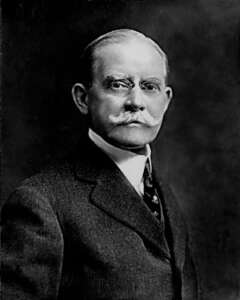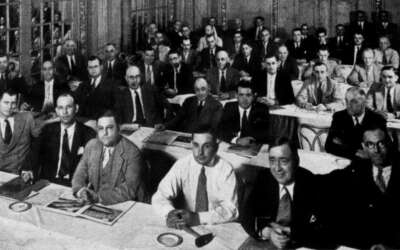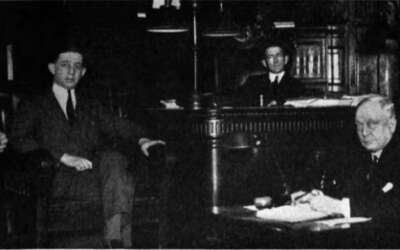The webinars. The LinkedIn posts. There has been a theme repeated almost weekly since March of 2020:
“As sales leaders, we made the unexpected switch to remote leadership. Now that it appears to be here to stay…what do we do? Remote sales leadership is so hard!”
Ironic…
Because the OGs of sales management were remote sales leaders.
The need for salespeople has been around since the beginning of life. Even at its most simple level – humans, walking the Earth, deriving their sustenance from the land. They formed packs, and the smart humans realized the Earth could be cultivated to produce things to eat, to build things they could use for protection and survival.
Some humans did it better than others. Some packs did it better than others. And, as you could probably guess, the realization that having every tribe produce everything they needed wasn’t sustainable. I’m guessing the following conversation probably happened more than once:
“Hey, look what they’ve got. Let’s kill them for it. We can take em’. I’ve been doing pushups!”
So, the battles began. Stronger tribes conquered the weaker tribes, and at the very least, took their stuff.
I picture a group of nerds sitting around, having lost all the computers they were brilliant enough to build because they weren’t so good at keeping the fraternity bullies from coming in and taking them. Weaker in strength, stronger in brains and skills. Computer nerds, a million years ago.
What did the smarter but weaker tribes do? They probably invented sales. They built. They established values. They went tribe to tribe and sold things.
Sales management, on the other hand, took a few million years to come about. While there were a couple of companies starting to formalize it in the late 1800s (i.e., NCR Corporation), up until around 1907, the job of sales was done barehanded. Companies didn’t

John Patterson, Founder of NCR Corporation
officially employ their own salespeople, instead, they hired independent salespeople (known as drummers or bagmen). Provided with samples, sent out on the road, and paid commissions for what they sold, that was the beginning and end of the job of sales management and leadership.
As companies began to hire and train their own salespeople, those sellers didn’t come to an office every day. They didn’t sit around cubes banging the phones, sucking off the kitchen cold brew machine and playing ping pong at lunch. No…they were road warriors, too.
In each case, whether it be the drummers and bagmen of old, or the world’s first formal sales organizations from 1907 through even the 1950s, sales leadership was remote leadership.
Your reps were gone, often living in their territories, sending call reports and orders back to the home office via wire or the mail. Sales leadership reciprocated by sending a “wire”, mailing out newsletters, and sending individual letters to their teams. NCR Corporation, the company that practically invented the sales organization, actually sent daily newsletters to hundreds of salespeople spread around the country…daily!
Is history repeating itself?
If we dig in a little deeper, history is repeating itself in some ways. It begins with the following theorem. (I’m not sure if I’m allowed to create a theorem, but who cares…I’m going to anyway!)
Throughout history, the importance of sales leadership depended on the importance of the salesperson to an organization’s success.
In other words, who needs a sales manager or a sales leader in times when the product sells itself?
I think about this even today. There are times when the economy is booming, and sales leaders essentially have two jobs to bring revenue in the door: recruit and report. In today’s economy, the number of newly minted tech unicorns has reached all-time highs. Is that because sales leaders have suddenly become incredibly effective? Nope…it’s because technology is what has held the economy together during a pandemic. Without technology, every economy would have essentially stopped. Without technology, the world would have looked more like 1918 during the Spanish Flu epidemic, when everyone still went to work because they had to work to provide.
When the economy is not booming, the job of sales leadership becomes five-fold. Leaders must focus their teams to optimize efficiency and outcomes. They must build and deploy their field organization to best align to that focus. They must teach and coach the fundamentals, ensuring their team gets right what they have to get right…every time. They must still forecast and measure. They also must create a fun environment where their teams become and stay fully engaged, stick around, and advocate.
In 1930, they were talking about sales and sales management in a way that, if we heard this today we’d totally agree.
“The problem of sales management at the moment is not the problem of taking orders or of making sales in large numbers at any cost. It is the problem of making sales in large volume and at low cost. It is the problem of eliminating selling wastes and inefficiencies by systematic and scientific procedures. Old-fashioned and easy-going methods must be discarded, along with high-powered and go-getting methods.” Sales Management by John G. Jones, 1930.
Digging deeper, in the late 1920s and early 1930s, it was said that they were in a time of radical change. It was said that rising sales curves are often deceiving. It was said that rapidly rising sales curves don’t indicate sustainability, they typically indicate profitless prosperity, where sales efforts cost money, and where raising top-line revenue without worry results in out-of-control spending…and eventually a crash.
Hmmm…what was going on in the late 1920s and early 1930s? Yes…the Great Depression.
This is not to say another great depression is coming…we just had better get sales leadership right. We had better realize that we’re hiring salespeople at record-breaking rates, promoting salespeople into sales leadership without any support or training, and it’s working – for now.
We must look to history to realize – original sales leadership was remote sales leadership, and optimized sales leadership was associated with the companies that withstood the lows.
I actually wrote this to be included in my new book coming out in a few months, The Transparent Sales Leader. Not sure if it will end up in the final version…my editor will likely help determine that, but it’s meant to explore the underpinnings of sales leadership, and help us all understand its role and how to optimize it.
For more sales history nerdery, follow along on Instagram or Twitter, or check out The Sales History Podcast wherever you listen.
By the way, if you like these articles, share em’! 😁 If you don’t comment or reach out and let me know why.
To check out more of my nonsense, CLICK HERE to head back to the Blog






0 Comments